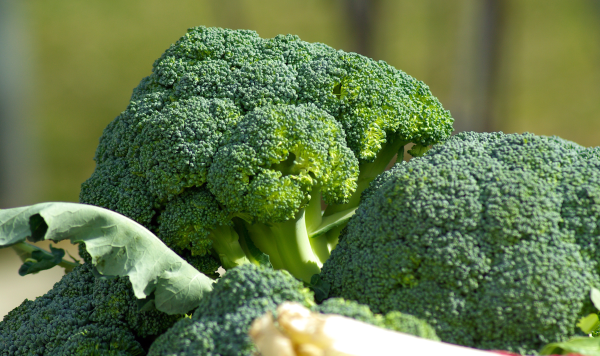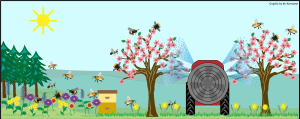
How to Grow Broccoli
DOWNLOADMay 18, 2016
Broccoli
- Family: Brassicaceae (Mustard)
- Season: Cool
- Ease of growing: Moderate
- Nutrient needs: High
- Water needs: High
- Common propagation: Transplant (spring or fall) or direct seed (fall)
Seed facts
- Germination temperature: 45°F to 85°F
- Germination time: 4 to 20 days
- Viability: 3 to 4 years
- Direct sow: Early June (fall crop)
Transplants
- Weeks to grow transplants: 3 to 4
- Start: March to April (spring crop); June (fall crop)
- Plant out: April to May (spring crop); July to August (fall crop)
Planning facts
- Typical spacing: 8” x 18”; 12” x 30”
- Square foot per plant: 1
- Time to harvest: 45 to 70 days from transplants
Variety selection
Most readily available broccoli varieties are hybrids used in commercial production. Some traditional non-hybrid varieties like De Cicco are well suited to the home garden since they produce large numbers of side-shoots allowing for more prolonged harvest. For spring plantings, look for early maturing varieties with good heat tolerance like Windsor. For fall harvest, look for varieties with good cold tolerance and longer maturity.
Preparation and planting
Broccoli grows well under Michigan’s cool conditions, especially near the lake shore where temperatures are moderated. It is not very heat tolerant, so it is best to plan on early spring and fall crops. It can withstand light frosts at seedling stage, but is not as frost tolerant as its close relative – cabbage. In the fall, mature broccoli can withstand temperatures down to 25°F and cold temperatures during this period make Michigan broccoli much sweeter than anything grown in warmer climates like California. In mild falls, it is occasionally possible to harvest broccoli into December.
Care
Provide broccoli plants with plenty of water for faster growth, and side-dress with fertilizer about three weeks after planting. Broccoli is a moderately heavy feeder, but over-fertilization can cause hollow stem.
Major pests
Insects: Imported cabbage worm, cabbage loopers, diamond back moth, flea-beetles.
Diseases: Black rot, club root, downy mildew, alternaria leaf spot.
Harvesting and storage
Harvest broccoli before the flowers open while the floret is still in a tight head. If the flowers open, it’s too late. When the terminal head of broccoli is removed, additional smaller heads will form as side shoot growth, increasing the overall yield. Don’t remove the plants after removing the large head. Broccoli is highly perishable under warm conditions so it is best to harvest in the morning and immediately refrigerate.
Developed by James Manning, Undergraduate Research Assistant, and Daniel Brainard, Vegetable Extension Specialist; MSU Department of Horticulture; Gary Heilig, MSU Extension educator.



 Print
Print Email
Email





